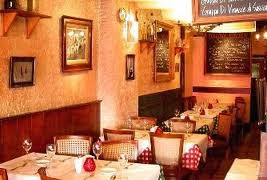Italian cuisine is without doubt one of the most well known and appreciated in the world and restaurants serving Italian cuisine in the world of the most popular ever, although they often have lost their ties with the homeland and the dishes, therefore, have taken a Local results with misrepresentations that sometimes border on the comical.
The great strength of Italian cuisine, and, paradoxically, also its limit, is the wide variety that distinguishes it. The cuisine of most states, in a variety moving from region to region depending on the differences in climate, land, and historical ones. In Italy these factors, extremely varied and differentiated brought Italian cooking to be what it is, a kitchen that is very different simply moving a few hundred km.
The differences in climate and land are obvious: it goes from the Alps, with typical mountain climate, the Po Valley, a continental climate, the hills of central, coastal areas, up to the southern regions and the islands, with their temperate climate. These differences have an impact not only on sustainable (for example, fish on the coast, inland to the flesh), but also on processed products. Think of a classic product used in Italian cuisine, such as sausages. In Emilia Romagna are a humid climate with cold winters ideal for seasoning meats, which allows a minimal addition of salt and then the production of sausages "sweet" in Tuscany unfavorable climate requires the use of much salt, in the south one is forced to the addition of even more aggressive seasonings like chili and other spices, to ensure the conservation and cover any unpleasant aromas of meat.
The factor that most influenced Italian cuisine, however, the historical: the tumultuous history of our country, made up of continuous invasions and fragmentation in a large states and small states has led to a great cultural diversity that has influenced a lot of the cuisine of each region . For example, the dishes and the typical products of the Emilian cuisine of mold Lombard and French meat cow and pork, butter and milk. Entering the Romagna, just outside the province of Bologna, traditional cuisine changes radically: the cheeses are sheep, sheep meat is consumed so much, and you use extra virgin olive oil. The boundary that determines these differences is that divided state of the Church and the Longobards, the first tied to the traditions of pastoralism and cultivation of the olive, the second concerning the breeding of cattle. Such examples, there are dozens of them, all over the Italian territory, and for this reason the Italian cuisine has become what it is, a collection of dozens of regional cuisines and local.
 Do you own an Italian restaurant and you can not find the staff of chefs, cooks, waiters, pizza qualified and experienced staff that can meet your business needs?
Do you own an Italian restaurant and you can not find the staff of chefs, cooks, waiters, pizza qualified and experienced staff that can meet your business needs?















